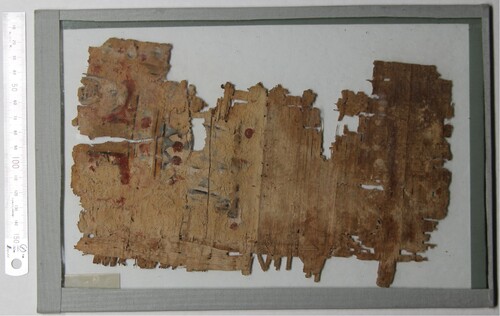Figures & data
Figure 1. Recto of the fragment showing a central fold and Greek text within clearly defined margins.
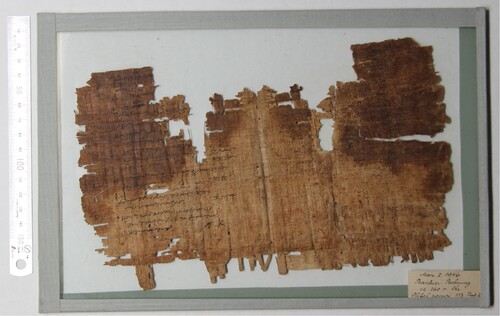
Figure 3. Enhanced MSI image with improved legibility of the text on the right side and ink transfer.
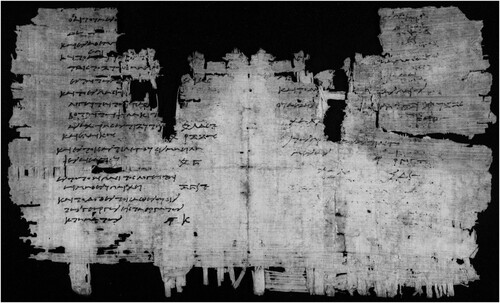
Figure 4. Direction of pricking of the hole sets: X/Y (category 1) in green and A/B/C/D, E/F, G/H/I/J (category 2) in red.
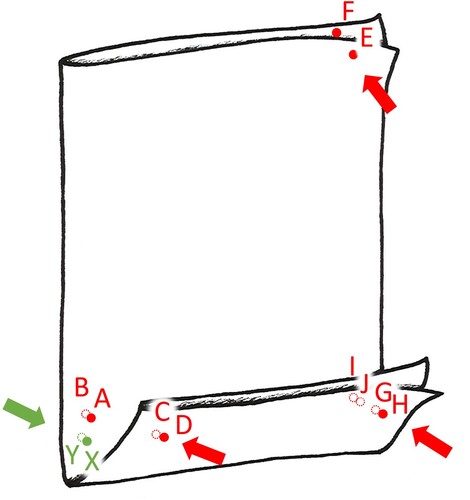
Figure 5. Reconstruction of the stages in the ‘lives’ of The Graz Mummy Book: 1. A blank papyrus sheet (formed of two kollemata joined by a kollesis) – 2. The piece is folded to form a bifolio – 3. Multiple bifolios are stacked together – 4. The bifolios are stab sewn – 5. The notebook is written upon – 6. The binding is dismantled and the bifolios are separated – 7. The bifolio is secured with tackets – 8. Significant damage occurs to the bifolio – 9. The bifolio is reused as mummy cartonnage alongside further papyrus waste and textile – 10. The cartonnage surface is plastered – 11. The cartonnage is painted – 12. The bifolio is taken from the mummy and becomes a museum object.
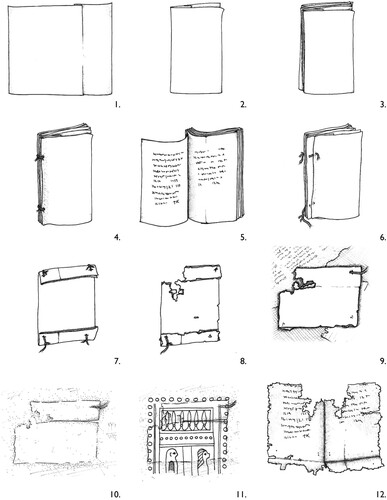
Data availability statement
All information about The Mummy Book is available here: https://mummybook.uni-graz.at/en/. All illustrations were carried out by Lena Krämer.

